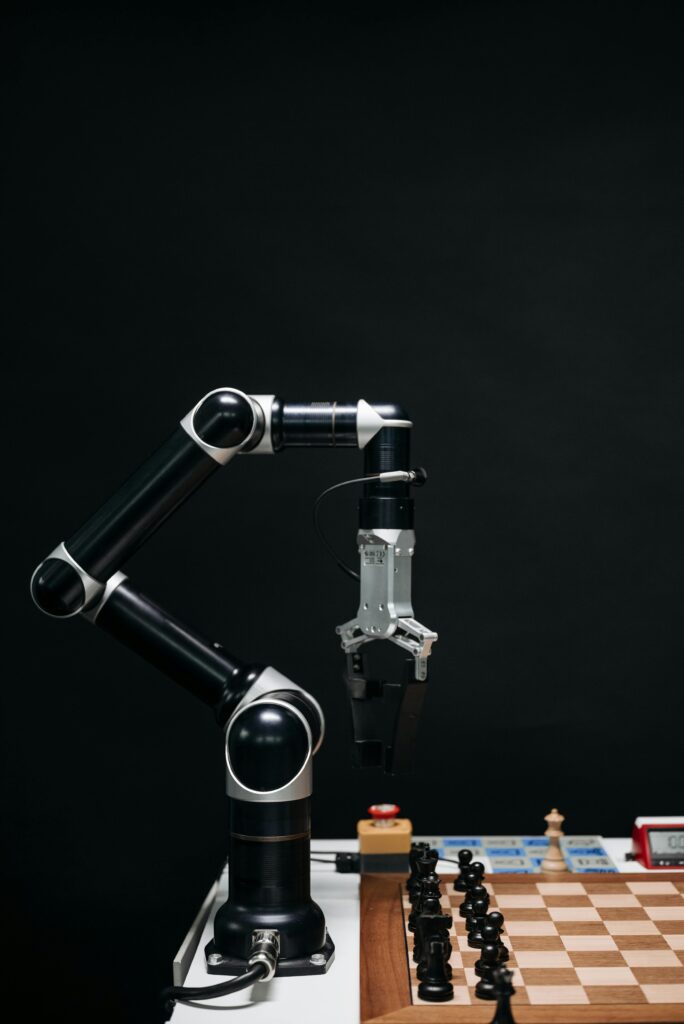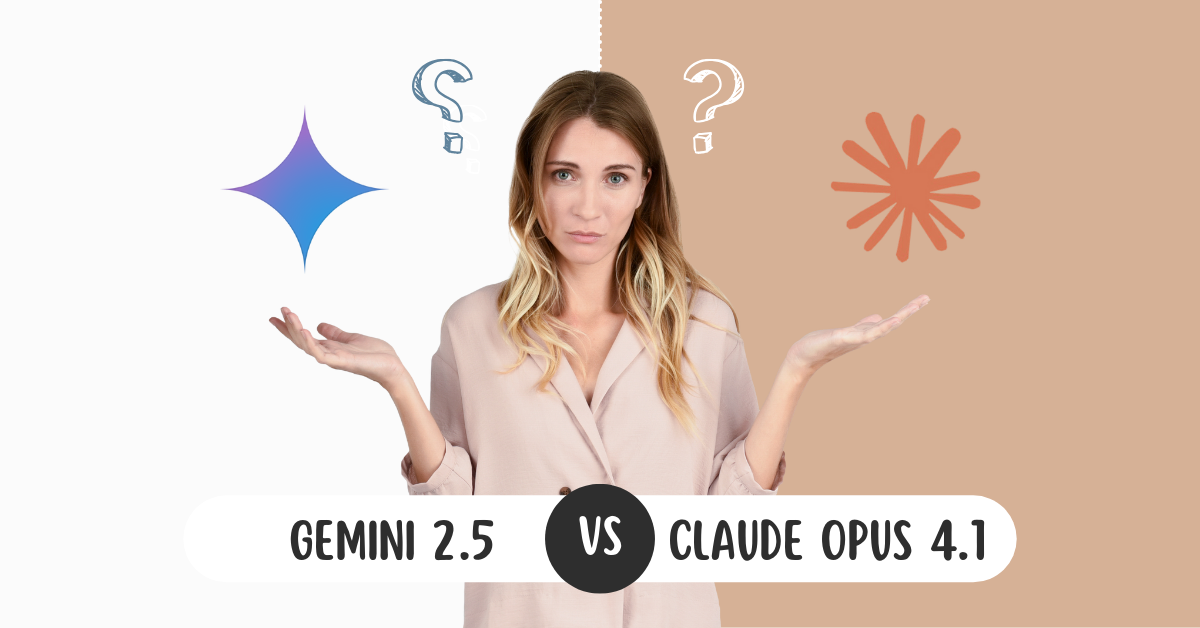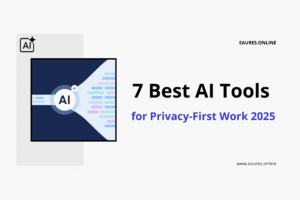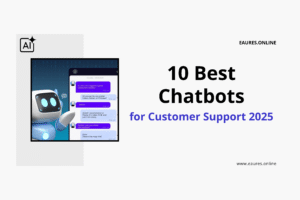Table of Contents
Gemini 2.5 vs Claude Opus 4.1: Definitive Tests 2025
Why this comparison matters in 2025
The race to operationalize large language models has moved beyond novelty demos into revenue‑critical workflows, which is why teams keep asking the same question: between Gemini 2.5 and Claude Opus 4.1, which model delivers the most value for their budget, stack, and risk profile? This definitive guide provides a practical, end‑to‑end framework for testing, scoring, and deploying the two models so you can justify a confident, auditable decision to your stakeholders. For readers benchmarking multiple vendors in parallel, our companion analysis on the Claude Sonnet 4 vs ChatGPT‑5 landscape provides helpful context on coding depth, context windows, and tooling for enterprise rollouts within the broader model market, as covered in the Claude Sonnet 4 vs ChatGPT‑5 ultimate benchmark.
Executive summary—who should choose what?
- Choose Gemini if your workloads are deeply multimodal, tightly integrated with Google’s cloud/data stack, or require fast iteration on structured tool use. In mixed media tasks—images, text, and data—Gemini 2.5 and Claude Opus 4.1 both perform well, but Gemini typically shines when your pipeline is already standardized on Google-native services and you need quick handoffs to downstream analytics.
- Choose Claude if your organization prioritizes reasoning clarity, long‑form drafting, and conservative safety behavior. For decision support, policy writing, and complex synthesis, Gemini 2.5 and Claude Opus 4.1 are close, yet many teams prefer Claude’s explainability and guardrails when producing executive‑facing content.
- Run a dual‑model strategy if you can. A/B switchboards let you route prompts by task: route multimodal and tool‑heavy tasks to Gemini, and route deliberative drafting or sensitive summarization to Claude. This approach ensures Gemini 2.5 and Claude Opus 4.1 are each used where they are strongest while you gather cost/quality telemetry for long‑term standardization.

The test plan that separates hype from value
Before comparing Gemini 2.5 and Claude Opus 4.1, align your evaluation with the way your teams actually work. Below is a sober methodology you can replicate in a week.
1) Scope the jobs‑to‑be‑done
List 8–12 real tasks that represent at least 80% of your anticipated LLM spend. For an unbiased bake‑off between Gemini 2.5 and Claude Opus 4.1, you’ll want coverage across:
- Knowledge work: policy summaries, RFP responses, market scans, and executive briefs.
- Product & growth: user interviews, feature ideation, messages/landing copy, and A/B variants.
- Engineering: bug triage, unit tests, code transforms, and code review.
- Ops & support: ticket classification, root‑cause suggestions, and macros.
- Data & research: schema inference, SQL synthesis, and docstring completion.
2) Build a reproducible harness
A fair contest between Gemini 2.5 and Claude Opus 4.1 requires:
- Version‑pinned prompts with clear system instructions.
- Reference answers or rubrics for partial credit.
- Latency and token telemetry captured per run.
- Seeded randomness (or higher determinism settings) during head‑to‑head runs.
- Human review guidelines to normalize scoring across raters.
3) Evaluation dimensions
Evaluate Gemini 2.5 and Claude Opus 4.1 across nine dimensions that reflect real‑world outcomes:
- Reasoning & math
- Coding & code intelligence
- Long‑context retrieval & RAG
- Multimodality (image + text + tables)
- Tool use & orchestration
- Agentic workflows (multi‑step planning)
- Reliability & determinism
- Safety, privacy & governance
- Latency, throughput & cost
Capabilities at a glance (what to look for)
Even when doc pages are vague or rapidly changing, you can still compare Gemini 2.5 and Claude Opus 4.1 by verifying these practical attributes during your tests:
- Context handling: Does performance degrade gracefully beyond a few hundred kilotokens? In realistic documents, Gemini 2.5 and Claude Opus 4.1 should both keep citations and conclusions stable as context grows.
- Tool calling: Confirm JSON schema adherence—malformed responses sink automation. Run 100+ calls per model to quantify tool‑call fidelity for Gemini 2.5 and Claude Opus 4.1 under pressure.
- Multimodal reasoning: Feed charts, screenshots, and tables. Expect crisp references to axes, legends, and cell values from Gemini 2.5 and Claude Opus 4.1, not vague prose.
- Chain‑of‑thought style (hidden vs. concise): Many enterprises prefer concise rationales. Ensure Gemini 2.5 and Claude Opus 4.1 can produce verifiable answers with brief justifications.
- Safety and policy alignment: Your acceptable‑use policies must be mirrored in prompts and monitoring. Prioritize consistent refusals and nuanced redactions across Gemini 2.5 and Claude Opus 4.1.
- Costs and rate limits: Evaluate not just per‑call cost but cost per accepted answer; Gemini 2.5 and Claude Opus 4.1 can differ significantly once you include retries, guardrails, and human approvals.
The definitive tests
Reasoning & math
Complex problems expose stability and factual discipline. Run a set of grade‑school and college‑level problems that require stepwise reasoning, then score for correctness and citation quality. In production, your rubric should track both the final numeric answer and the method, because stakeholders need confidence when Gemini 2.5 and Claude Opus 4.1 are used in planning and forecasting.
Coding & code intelligence
High‑value engineering tasks reward precision over eloquence: function signatures, edge‑case tests, and incremental refactors. Generate unit tests, migrate frameworks, and request time‑to‑fix estimates. You’ll likely find that Gemini 2.5 and Claude Opus 4.1 alternate leads depending on stack and language; for example, structured tool calls to run linters and formatters often improve Gemini pipelines, whereas long‑form code review narratives might read cleaner from Claude. If you’re deciding which editor companion to pair with your IDE, this roundup of best AI code assistants in 2025 includes hands‑on benchmark ideas you can adapt to the two‑model bake‑off, as discussed in the best AI code assistants in 2025 hands‑on benchmarks.

Long‑context retrieval & RAG
Realistic deployments hinge on retrieval quality. Test Gemini 2.5 and Claude Opus 4.1 by injecting distractors, mixing old and new policy docs, and varying chunk sizes. Success here shows up as consistent, citation‑anchored answers even when the answer hides in a footnote. Your pipeline should log which passages were retrieved, so you can tie changes in retrieval to changes in model output across Gemini 2.5 and Claude Opus 4.1.
Multimodality
Supply PDFs, dashboards, and whiteboard photos. Demand specific references—“Row 14 shows a 2.3% MoM increase”—not generic summaries. If your product team produces customer‑facing visuals, make multimodal rigor a top criterion as you compare Gemini 2.5 and Claude Opus 4.1 because subtle numeric misreads can erode trust.
Tool use & orchestration
Ask each model to call multiple tools in sequence—e.g., search → retrieve → summarize → draft. Score reliability by how often Gemini 2.5 and Claude Opus 4.1 respect JSON schema, include all required fields, and recover from upstream errors. The best model for you is the one that fails gracefully, not the one that never fails.
Agentic workflows
When tasks require multi‑step planning (e.g., data cleaning → hypothesis generation → SQL synthesis → chart narration), instrument “thinking” steps. Evaluate whether Gemini 2.5 and Claude Opus 4.1 can decompose work into stable subtasks, stick to a plan, and update the plan when a tool returns an unexpected result.
Reliability & determinism
Set temperature to a stable value and run 30–50 repeated trials with identical prompts. Teams are often surprised by how much variance emerges; measure how often Gemini 2.5 and Claude Opus 4.1 return the same structured outputs and whether minor logit noise flips a pass into a fail in your pipeline.
Safety, privacy & governance
Your governance layer should combine red‑team prompts, content filters, and audit logs. Test Gemini 2.5 and Claude Opus 4.1 under “borderline” requests that good users may ask in good faith—compliance edge cases, sensitive personal data, or medical/financial hypotheticals—and record refusal style and recovery suggestions. Document what you accept as an appropriate refusal for your domain and ensure Gemini 2.5 and Claude Opus 4.1 align consistently with that policy.
Latency, throughput & cost
Measure p50/p95 latencies, tokens‑per‑second, and end‑to‑end wall time, including retriever and tool calls. Then compute cost per accepted answer—the metric that determines ROI. Real‑world telemetry often shows Gemini 2.5 and Claude Opus 4.1 swapping places as the cheaper model depending on how frequently retries or tool corrections are needed.
Prompt design that travels well across models
You can raise performance more with better prompts than with an impulsive model switch. The following templates work well across Gemini 2.5 and Claude Opus 4.1:
The Grounded Brief
Goal: precise output tied to sources.
Structure: system role → task definition → formatting contract → source list.
Why it works: Both Gemini 2.5 and Claude Opus 4.1 respond reliably when inputs explicitly enumerate allowed sources and output schema.
The Decision Memo
Goal: executive‑ready summary with point‑counterpoint.
Structure: context → 3 options → risks → recommended action → next steps.
Why it works: When Gemini 2.5 and Claude Opus 4.1 are judged on clarity and accountability, a fixed memo shape reduces meandering outputs.
The Diff‑Driven Code Review
Goal: actionable review notes with severity and fix hints.
Structure: project context → rules to check → diff → required output fields.
Why it works: It narrows freedom, which helps Gemini 2.5 and Claude Opus 4.1 deliver consistent, testable feedback.
If you want to systematize prompting across your org, adopt a unified flow that covers context packing, grounding, and iteration cycles; we outline that in our guide to a unified prompting flow for Copilot and Claude, which translates cleanly to Gemini 2.5 and Claude Opus 4.1.

Buyer’s matrix—how to tailor the decision to your team
For product managers
PMs juggle research, prioritization, and stakeholder narratives. You’ll care most about summarization fidelity, reasoning clarity, and the ability to ingest messy artifacts (screenshots, interviews, spreadsheets). Put Gemini 2.5 and Claude Opus 4.1 through structured “discovery sprints”: synthesize 20 interview notes into themes, propose measurable hypotheses, then suggest experiment designs with sample metrics. To speed this work, adapt our library of AI prompts for product managers so Gemini 2.5 and Claude Opus 4.1 produce consistent artifacts across your roadmap.
For engineering leaders
Run a week‑long pilot in a staging repo. Feed each model the same issues, logs, and diffs. Track how often Gemini 2.5 and Claude Opus 4.1 propose correct minimal fixes, generate passing unit tests, and respect your security patterns. Compare the “first‑time‑right” rate at the PR level; that single metric is often decisive for platform choice.
For marketing & sales
Your risk is off‑brand or off‑policy copy. Train style guides and tone controls as few‑shot examples, then have Gemini 2.5 and Claude Opus 4.1 create tiered variants—LinkedIn, email, and landing pages—based on one brief. Pick the model that remains on‑brand without over‑editing.
For operations & support
Accuracy is measured by case deflection and handle time. Build a testbed of historical tickets and knowledge articles, then compare how Gemini 2.5 and Claude Opus 4.1 classify, suggest macros, and produce concise escalation notes.
Practical scoring rubrics
A single 0–4 scale for everything
To make results explainable to executives, score Gemini 2.5 and Claude Opus 4.1 on a single rubric:
- 0: Fails contract (wrong format, unsafe, unusable)
- 1: Major errors (≥2 factual or structural issues)
- 2: Passable but needs heavy edits
- 3: Good with light edits
- 4: Ready to ship
Weighting by business value
Weight each task by its share of expected usage. If RFP writing accounts for 30% of projected volume, its score should carry 30% of the model decision for Gemini 2.5 and Claude Opus 4.1.
Cost‑adjusted quality
Transform raw scores into quality‑per‑dollar by dividing the weighted score by the fully loaded cost per accepted answer. This normalizes Gemini 2.5 and Claude Opus 4.1 for retries, guardrails, and human review.
Implementation patterns that reduce surprises
Defense in depth for safety and privacy
Set policy in three layers: (1) prompt layer (scope and disallowed topics), (2) middleware (filters, PII redaction, audit logs), and (3) human approvals for sensitive actions. This layering keeps Gemini 2.5 and Claude Opus 4.1 compliant even when prompts evolve.
Structured outputs everywhere
Prefer JSON responses with enumerated fields. Reject malformed outputs automatically and retry once with a system reminder. This protects downstream systems when Gemini 2.5 and Claude Opus 4.1 drift under load.
Retrieval as the default
Treat RAG like a library card, not a memory trick: if the answer should be in your corpus, force retrieval and require citations. This habit prevents both Gemini 2.5 and Claude Opus 4.1 from hallucinating.
Migration, interop, and dual‑vendor strategy
Switchboards and routing
Create a thin inference layer that (a) logs prompts, (b) routes to Gemini 2.5 and Claude Opus 4.1 by task, and (c) stores outcomes for retraining and policy tuning. Over 90 days, your data will show which model is truly cheaper and more accurate for each workflow.
Contracting pragmatics
Negotiate SLAs on uptime and rate limits, not just price. Ask vendors to document model lifecycle policies so you know how long Gemini 2.5 and Claude Opus 4.1 versions will remain stable.
Change management
Running enablement workshops pays back fast. Base your curriculum on a handful of high‑leverage prompts and a shared output checklist so Gemini 2.5 and Claude Opus 4.1 produce artifacts that downstream teams can trust.
Frequently asked questions
“Which model is strictly better?”
Neither wins universally. The best answer is task routing: route tool‑first, multimodal flows to Gemini; route deliberative, policy‑tuned drafting to Claude; monitor cost per accepted answer for Gemini 2.5 and Claude Opus 4.1 and adjust.
“How do we reduce hallucinations?”
Constrain prompts, enable retrieval, and require citations. Have a fail‑closed schema so Gemini 2.5 and Claude Opus 4.1 can’t return free‑text when structured fields are required.
“What about long‑term vendor lock‑in?”
Abstract your inference layer. Keep prompts and evaluation data vendor‑neutral so you can validate Gemini 2.5 and Claude Opus 4.1 against new entrants without rewriting half your stack.

A quick start: your 7‑day evaluation sprint
Day 1–2: Draft your task list, prompts, and rubrics; collect gold answers. Make both Gemini 2.5 and Claude Opus 4.1 adhere to the same output schema.
Day 3–4: Run 200–500 calls per model across the nine dimensions; record latency, token use, and pass rates.
Day 5: Conduct human reviews; adjudicate close calls and record edit distance.
Day 6: Compute quality‑per‑dollar and build your routing table between Gemini 2.5 and Claude Opus 4.1.
Day 7: Present a recommendation that highlights where each model fits, plus a proposal for a dual‑vendor switchboard.
For a broader market perspective beyond Google and Anthropic, compare reasoning, coding, and tool orchestration across rival stacks in our Claude Sonnet 4 vs ChatGPT‑5 deep‑dive; it helps frame this decision within the larger ecosystem and keeps your evaluation criteria consistent with parallel models, as shown in the Claude Sonnet 4 vs ChatGPT‑5 benchmark.
External resources to deepen your tests
When you’re ready to formalize your harness for Gemini 2.5 and Claude Opus 4.1, anchor it to respected references and datasets so results are repeatable:
- Use the Gemini model family documentation to understand request/response patterns and constraints before you scale your prompts in production; modeling your schema on official examples typically reduces retry rates. Consult the latest patterns in the Gemini API documentation.
- Study Claude’s tool‑use patterns to tighten your JSON contracts and guarantee predictable function calls during orchestration pipelines, referencing the Claude model documentation to align parameters and safety.
- To calibrate reasoning rigor in your harness, include a slice of general‑knowledge benchmarks like the MMLU benchmark and math‑focused sets such as GSM8K to see how Gemini 2.5 and Claude Opus 4.1 handle multi‑step arithmetic with explanations.
- For coding depth and test coverage, adapt tasks from the HumanEval dataset so you can quantify how Gemini 2.5 and Claude Opus 4.1 handle edge cases.
- If you want a broader, long‑horizon perspective on evaluation design and coverage, Stanford’s HELM evaluation suite offers a useful taxonomy you can map back to your business tasks.
- Finally, frame your governance controls and risk language in your test plan using the NIST AI Risk Management Framework, and reinforce tool‑calling contracts with the JSON Schema specification so Gemini 2.5 and Claude Opus 4.1 remain compatible with your services.
Conclusion
Treat this as a portfolio decision, not a horse race. In our experience, a deliberate test plan surfaces clear routing rules: use Gemini for tool‑first, multimodal operations at scale; use Claude for long‑form reasoning and executive‑grade drafting; measure cost per accepted answer; then lock in the model that the data favors for each workflow. If you want to contextualize these findings within the broader vendor field, round out your research with our in‑depth Claude Sonnet 4 vs ChatGPT‑5 analysis, which complements this guide and helps standardize how you evaluate models side by side, as explored in the Claude Sonnet 4 vs ChatGPT‑5 ultimate benchmark




